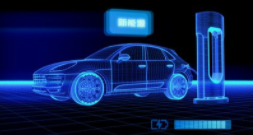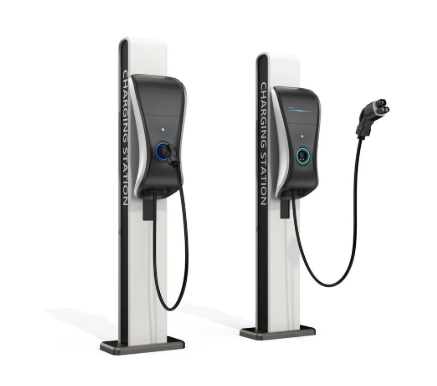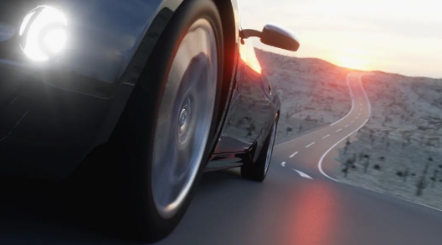
How to choose a new energy vehicle?
With the rapid development of new energy vehicles in recent years, more and more consumers are interested in purchasing new energy vehicles. It is necessary to clarify their intentions and clarify their needs before purchasing:
1. The original intention of purchasing new energy vehicles?
2. Are there stable charging conditions?
3. Is there a need to run long distances?
4. What is the climate in your area?
1. The original intention of purchasing new energy vehicles
The original intention of purchasing a new energy vehicle determines the owner's tolerance for the shortcomings of the new energy vehicle. Many people buy new energy vehicles not because they think new energy is good at first, but the new energy fever brought about by the adjustment of restrictions on travel is the best proof.
In such a case, consumers initially hope that the new energy vehicle they buy should not be too different from the fuel vehicle in terms of experience. If problems such as battery life and charging bring a lot of inconvenience to daily travel, then You will feel trapped by the policy.
However, if consumers buy new energy vehicles because they recognize that new energy vehicles perform better in terms of power, economy, ride comfort, quietness, etc., then they should know that new energy vehicles are still insufficient in some scenarios at this stage. , and is willing to accept the inconvenience that it may present in some cases, which is completely different from the mentality of the previous class of car owners to deal with these situations.
2. Is there a stable charging condition?

It has always been emphasized that the experience of using pure electric vehicles with or without a private pile is completely different. But objectively speaking, all charging piles that have their own living/working positions at a moderate distance, no additional parking fees, and in most cases, can be considered to have stable charging conditions.
New energy vehicles are in a period of rapid development, and the matching public infrastructure charging piles are also rapidly popularizing. According to the guidelines of the "Carbon Peaking Action Plan before 2030" and the planning of the Ministry of Industry and Information Technology, it is expected that by 2025, my country's vehicle-to-pile ratio should be between 2:1 and 3:1, and by 2030, it will be close to a reasonable value of 1:1.
According to the statistics of Wuhan Energy Bureau, the ratio of piles to vehicles in Wuhan has exceeded 1:1, which is much higher than the national average. The layout of charging piles combines the frequency of use of new energy vehicles, the focus of the use area, etc., and the points are many and wide, and the layout is not completely balanced. Leisure and entertainment places such as large business districts, parks, and large enterprises are the focus of the layout. In order to better meet the charging needs of new energy vehicles, Wuhan Municipal Development and Reform Commission has started to promote the construction of new energy charging piles. 150 power stations are added every year. According to the monitoring situation of the vehicle charging pile platform and the dispersion and collection of the traffic information of new energy vehicles, the layout of the charging piles is further optimized.
With the improvement of the charging network, the charging anxiety of new energy vehicle owners will be greatly alleviated.
3. Whether there is a long-distance demand

(1) The family's first car (repurchase is equivalent to the first car), then the task of this car will still be very heavy, including daily commuting, city travel, returning home on holidays, self-driving tours around...etc. There may still be a certain long-distance demand, so even if there are usually charging conditions at this time, it still needs to be further discussed according to the actual situation.
(2) If the frequency of long-distance travel is high (more than 5 trips per month for a one-way trip of more than 300km, or more than 3 times a month for a one-way trip of more than 500km), and the long-distance travel destination is likely to have no charging conditions, It is not recommended to buy a pure electric model. If you must buy it due to restrictions, try to choose a model with a NEDC battery life of more than 600km, and pay attention to the fast charging power; and if the charging conditions of the travel destination are relatively good, then it is still possible. Consider pure electric models, and the NEDC cruising range can be further relaxed to more than 500km. (Friends who intend to buy Weilai and are in the vicinity of expressways with power stations in Beijing, Shanghai, Beijing, Hong Kong and Macau are not subject to this restriction);
(3) The frequency of long-distance travel is not so high, or if you recall your previous car use scenarios and find that you have never driven far away, it is still highly recommended to buy new energy vehicles. In this case, if there are private piles, the minimum driving mileage of the vehicle can be as long as it can meet the round-trip commuting mileage of 3-4 days, so as to save the cost of car purchase (but try not to be less than 300km); if there is no private pile, then , the vehicle mileage must be able to meet the daily travel needs of a week, and not less than 400km.
(4) The second car in the family, then in most cases, pure electric vehicles can be selected. There are generally two situations when a family purchases a second car:
One is a supplement to the first car. For example, the family already has a main car (mostly a fuel car), but it may be because the other half is not going to work, the family picks up the children, the chef goes out to buy vegetables...etc. Buy another car as a spare. Then in this case, there is almost no need for long-distance travel. The purchase principle refers to what I said before. If you have a private pile (including a portable charger), the minimum driving mileage of the vehicle can meet the 3-4 day round-trip commute. The mileage is enough to save the cost of buying a car; if there is no private pile, the cruising mileage of the vehicle must be able to meet the daily travel needs of a week, but you don't need to care too much about the minimum cruising range, after all, there is another car that is really out of power. car emergency.
The other situation is the upgrade of the first car, which is often because the first car was not of a high enough grade or was a certain age, or the actual demand for the car has changed. The car of the previous one is no longer able to meet the current family car needs, and the previous car is not ready to be sold due to the retention rate, emotional or other reasons, so you need to buy another one. In this case, the task of this car is actually a bit heavy, and there may be a certain long-distance travel demand, so the overall purchase principle is still determined according to the first car, but because there is still a spare car, so the battery life The mileage limit can be appropriately relaxed, and more attention may be paid to factors such as space and configuration.
4. The climate of the region

The climate will also have an impact on the choice of new energy vehicles. If it is in a relatively hot area, then it is necessary to pay special attention to the heat dissipation of the battery, and try not to choose a model with an air-cooled battery; in addition, the fuel consumption of the same fuel vehicle will increase in summer when the air conditioner is turned on. Similarly, turning on the air conditioner for electric vehicles in summer will also have a certain impact on the battery life.
If you are in a colder area in winter, you need to consider the impact of low temperature on battery efficiency and the impact of thermal air conditioning on battery life. If you have to buy a pure electric vehicle, try to choose a model with a heat pump air conditioner and battery pack preheating function. And the driving mileage needs to be multiplied by 1.5-2 times according to the previous conclusion according to the temperature. If you are in the Northeast, try not to choose a pure electric vehicle. If you really pursue the driving experience of a tram, you can consider a plug-in hybrid with a longer battery life.
The average minimum temperature in winter is 1℃-3℃, which is much more suitable for pure electric vehicles than the temperature of -20℃ in the north.
